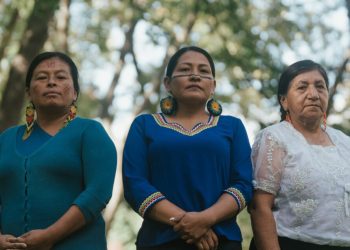Canada is under-reporting deforestation rates and the carbon impacts of forestry practices, according to a new report by the Wildlands League. The report alarms those who have spent years trying to improve forestry practices that consider the impacts of climate change.
Daimen Hardie, executive director of the Sackville-based Community Forests International, worked for years as a tree planter in Canada’s forest industry and has spent time on the roads and landings investigated in this new research.
“I always knew they were some of the deepest scars on the landscape but this new research is shocking. The carbon debt from clearcutting in Canada is even worse than previously estimated,” says Hardie.
The report issued in December in time for the UN Climate Change Conference (COP 25) in Madrid reveals that approximately 21,700 ha (about 40,000 football fields) are deforested from roads and landings for forestry operations each year in Ontario alone, and this deforestation has not been previously included in the calculations.
The Wildlands League says that is seven times greater than the reported deforestation rate by forestry for all of Canada despite the fact that only 17% of Canada’s logging takes place in Ontario. Canada has been reporting a deforestation rate of 2,800 ha/year, a fraction of the actual total.
The Wildlands League calls the associated carbon cost of Ontario’s deforestation rate “nationally significant,” representing an estimated 16.5 megatons of carbon dioxide equivalent of lost carbon sequestration in the last 30 years.
Canada’s forests are emitting more carbon into the atmosphere than they are absorbing, explains Hardie.
“Canada’s forests could make the difference we need this decade to avoid worst case climate breakdown. Forests are irreplaceable carbon sinks and our country is basically one of the largest forests on Earth. There’s more forest area here than all of Brazil or China, for example,” says Hardie.
The report, “Boreal Logging Scars: an extensive and persistent logging footprint in typical clearcuts of northwestern Ontario, Canada,” says that a total of 650,000 ha of productive forest has been lost in the last 30 years due to roads and other logging infrastructure.

“That’s a staggering loss, equivalent to 10 times the area of the City of Toronto,” says Janet Sumner, the Executive Director of Wildlands League.
Wildlands League wants the government of Canada to revise rules for monitoring deforestation to address the impacts from logging roads and landings in the boreal forest; and, to review and improve its current under-reporting of the carbon impacts from logging.
Beyond reporting deforestation rates more accurately, for Hardie, forestry needs to be part of achieving “the greatest possible carbon pollution reductions as quickly as possible. We have to adapt. Canada can be a leader globally on climate-smart forestry but we’re not a leader right now.”
Hardie’s organization, Community Forests International, is one organization in New Brunswick working to combat deforestation and the carbon impacts by forestry.
“In New Brunswick, we actively protect and restore the special Acadian forest biodiversity on the forestland we manage, that’s also how we store the greatest possible amount of carbon over the long term,” says Hardie.
Hardie’s organization is working with the New Brunswick Federation of Woodlot Owners to “share our forest carbon and climate resilience knowledge with other woodlot owners and managers in the region so it becomes more of a mainstream approach.”
“Transitioning in a way that shares an economic upside with people and communities most directly connected to the forests is so critical. I believe smart climate policy can be the best and most inclusive rural economic development policy too,” says Hardie.
Tracy Glynn is a reporter for the NB Media Co-op and doctoral researcher with RAVEN, a media activist research project based at the University of New Brunswick.








![Is pollution from industry causing the neurological disease ALS in New Brunswick? [video]](https://nbmediacoop.org/wp-content/uploads/2025/10/Quintin-Soloviev-Belledune_Generating_Station_in_New_Brunswick_Canada-120x86.jpg)

